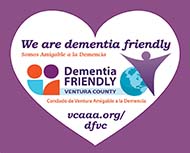
June is National Safety Month, so it’s a perfect time to take a look around the house and do a safety check. If you have a senior loved one who’s still living at home, it’s essential to evaluate the home to make sure it’s safe.
According to the U.S. Consumer Product Safety Commission, one in three seniors over the age of 65 make visits to the emergency room each year for injuries related to falls at home. Falls can be devastating in older adults, resulting in broken bones or even death. Fortunately, such accidental injuries are often preventable when you remove the safety hazards. Here’s where you should look.
Floor Hazards
One of the biggest fall risks for seniors is flooring. If the home has carpet, feet or canes can get caught on any loose patches of carpet. The same is true for tile or laminate floors. Look for any areas where the floor covering is not completely level or where it may be damaged.
Replace any loose or damaged areas of flooring. Make sure rugs are also not trip hazards by putting a non-slip rubber mat underneath them.
Bathroom Hazards
The bathroom can be one of the most dangerous rooms in the house, especially for seniors and others who are at high risk of falls. The combination of water and tile can make for extremely slippery surfaces.
Check for the following things in the bathroom:
• Make sure the tub or shower has a non-slip surface
• Ensure that towel bars are installed in the shower and are secure
• Make sure there’s a securely installed grab bar by the toilet and bathtub
• Be sure the flooring has a matte or textured finish
• Light switches should be installed near the door
• Make sure all lighting is bright enough
• Install a shower or bath seat if one is not already present
• There should be adequate ventilation and a safe source for additional heat
Stair Safety
Stairs are another common hazard in the home, especially for seniors. Stairs can be physically challenging for many seniors to climb. There are also specific factors that can make stairs a significant challenge, but fortunately, they have fixable solutions. Some of these easily fixable issues include the following:
• Make sure there aren’t any papers, items of clothing, books, or other objects on the stairs. These items are significant trip hazards.
• Handrails should always be installed on both sides of the staircase and should be secure rather than loose.
• Stairways should be well-lit.
• Make sure there’s a functioning light switch at both the top and bottom of the staircase. You may have to hire an electrician to install these switches if they aren’t currently in the home.
• Make sure that any carpet or flooring on the stairs is securely fastened and not loose.
Other tips for keeping the home safe for your senior loved one include making sure there is adequate lighting throughout the entire house, with easily accessible light switches. Make sure the step stool used for reaching objects is sturdy. And keep as many frequently used items at waist level as possible.
By making sure the home is secure and free from fall hazards, you can help your senior loved one live safely and independently for as long as possible.







